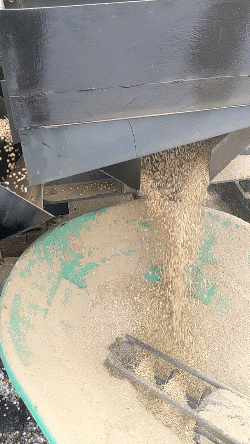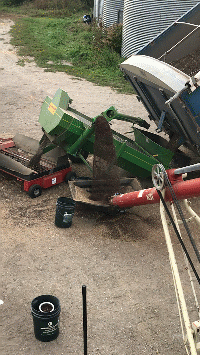Pea Intercropping Practices
CONNECTING FARMERS TO SOIL HEALTH
Hello, Friends.
In light of this week's upcoming webinar/farm panel, we wanted to highlight a few different pea intercrops from farms who have been adopting, learning & tweaking some best practices.
Upcoming Farmer Panel: Register Here
Ryan Boyd - mixed grain and cattle farm from Forrest, Manitoba
Nick Cowan - mixed grain and cattle farm from Hartney, Manitoba
Alex Boersch - grain farm from Elie, Manitoba
From 2017 to 2019, intercrop acres have almost doubled according to Saskatchewan Crop Insurance Corporation (SCIC). According to SCIC, about half of the 72,000 acres intercropped in Saskatchewan last year had pea as the legume species.
We understand the challenges and farmer hesitations when adopting intercropping practices..
To learn more about intercropping, you can visit our intercrop best practices page.
Pea Intercropping
The Concept
Intercrop peas with a more stable, upright plant (trellis) to reduce lodging and decrease the chance of fungal pathogens.
Pea provides nitrogen for companion crop (reduced inputs)
Large seed size makes for easy separation
Balance C:N (Legume + high carbon companion)
Take advantage of the evergrowing speciality pea market. (cover crop market)
A few farms were kind enough to share their intercrop experience, information and separation methods.
pea intercrop idea
forage peas/cl canola
Seeding: 2 Ibs of Canola Seed, 55 Ibs of 4010 Forage peas, Inoculant
Fertilizer: Crystal Green Phosphorus & Sulphur
Herbicide: Pre-emergence glyphosate, in crop oddysey & assure & pre-harvest reglone.
Fungicide: None was applied but a micronutrient package was applied at the start of flowering
Observations: Although the canola did a good job holding the peas up throughout most of the field, there were parts where the peas overwhelmed the canola stand and pulled everything to the ground. We will try a higher rate of canola next year.
Forage Peas/CL Canola
Forage Peas/CL Canola
Forage Peas/CL Canola
Forage Peas/CL Canola
Separation: was done by a 7 cylinder Kwik Kleen. Once the settings were adjusted and the kinks were worked out, the separation was fast (up to 2000 bu/hr) It was separated off the combine.
Harvest: 28 bu/acre of forage peas ($13.50/bu) and 9 bu/acre of canola.
Harvestability: Combine was set for canola settings. Clean sample. Few splits.
pea intercrop idea
Yellow PEas/Oats
Seeding: 40 Ibs of oats, 130 Ibs of yellow peas, inoculant.
Fertilizer: P, K, B, Mo, Ca + Fulvic.
Herbicide: Basagran Forte
Fungicide: None. Micronutrient package was applied.
Separation: Garrat Vibratory Table. VFD Auger. 400 – 500 bu/hr. 2% splits in Oats
Harvest: 80 bu/acre of oats and 30 bu/acre of yellow peas.
Yellow Peas/Oats
Yellow Peas/Oats
Yellow Peas/Oats
Yellow Peas/Oats
pea intercrop idea
Austrian winter peas/oats
To learn more, contact Alex Boersch; info@regenagsolutions.ca
Austrian winter peas/oats
Pea Intercrops
Separation Methods
Yellow Peas/Oats
Forage Peas/Canola
Austrian Winter Peas/Oats
To sign up for this blog, click here.
"There is no soil amendment that will fix your soil. Only your understanding of how the soil functions will fix what ails your soil. You must become a student of what makes soil healthy. It’s that simple and there are no shortcuts.”
Jon Stika. A Soil Owners Manual
With Gratitude,
Covers & Co. Team
Joseph Gardiner, Travis Avery, Mark Fallis, Owen Taylor













